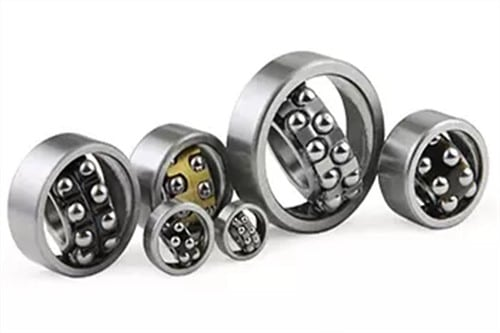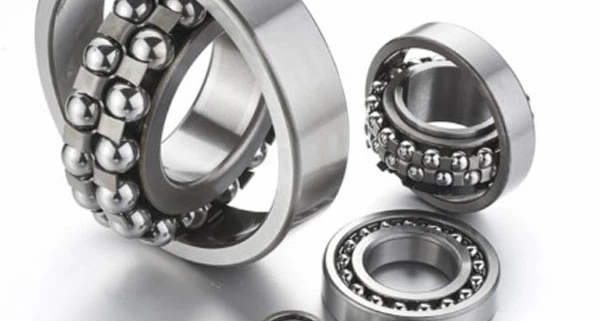What is Aligning ball bearings?
Aligning ball bearings are self-aligning bearings that can bear both radial and axial loads. This special bearing is mainly used in papermaking machinery, speed reduction devices, railway vehicle axles and other equipment.
The structural design of the self-aligning ball bearing gives it excellent self-aligning performance. Its outer ring raceway is spherical, and the inner and outer rings can be tilted relative to each other by no more than 3 degrees. This enables the bearing to automatically adjust the axis deviation during installation and operation, reduce vibration and wear caused by shaft bending or tilt, and improve the operational stability and reliability of the equipment.
In addition, self-aligning ball bearings also have the characteristics of low friction, low noise and long life, and are widely used in various machinery, such as precision instruments, low-noise motors, automobiles, motorcycles and general machinery. Its structural form includes models with dust cover and sealing ring, which not only ensures the lubrication and dust-proof effect of the bearing, but also increases its service life.
Regarding the installation of self-aligning ball bearings, first of all, when installing the self-aligning ball bearings, they must be placed in a horizontal position and fixed with special tools such as screws or hammers. Next, ensure that the inner ring of the bearing fits closely with the shaft to avoid gaps.Afterwards, you can turn the bearing by hand to check whether it rotates smoothly. If there is any jamming, make appropriate adjustments. During the installation process, you need to pay attention to the installation direction of the bearing. Generally speaking, self-aligning ball bearings can be installed in both directions, but you need to choose the correct installation direction according to the actual situation to ensure that it achieves the best performance.After completing the installation, it is also necessary to check the contact between the bearing and the shaft to ensure that the contact surface is free of impurities or damage. Finally, apply appropriate lubricant to extend the life of the bearings.

When purchasing self-aligning ball bearings, you first need to clarify the application scenarios and requirements. Specifically, factors such as the fit of the shaft and the bearing, the installation position, and the size of the load need to be considered, which will directly affect the selection of the self-aligning ball bearing.
For larger-sized self-aligning ball bearings, special attention needs to be paid to their load-bearing capacity. If the diameter of the shaft is larger or the bearing capacity is heavier, it is particularly important to select an appropriately sized aligning ball bearing. In this case, it is recommended to use multi-row self-aligning ball bearings to improve the bearing capacity and stability.
Secondly, the rotation speed of the shaft is also an important factor in selecting self-aligning ball bearings. If the shaft needs to rotate at high speed, it is recommended to use high-speed bearings. In addition, choosing self-aligning ball bearings with dust-proof and anti-fouling devices such as oil seals or waterproof rings can also effectively extend the service life of the bearings.
Finally, when purchasing self-aligning ball bearings, you should also pay attention to their quality and brand. Choosing self-aligning ball bearings produced by regular manufacturers with good reputation and quality assurance can effectively reduce the risk of bearing damage.
In general, choosing a suitable self-aligning ball bearing requires comprehensive consideration of multiple factors, including bearing size, load-bearing capacity, rotation speed, dust and anti-fouling capabilities, and brand. Only by correctly selecting the self-aligning ball bearing can you ensure that it can perform optimally and extend its service life.



